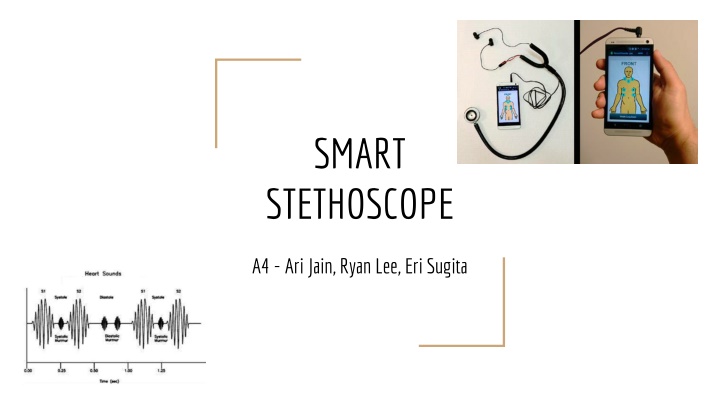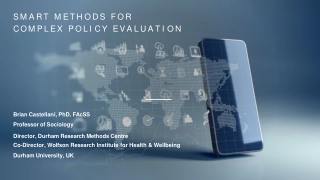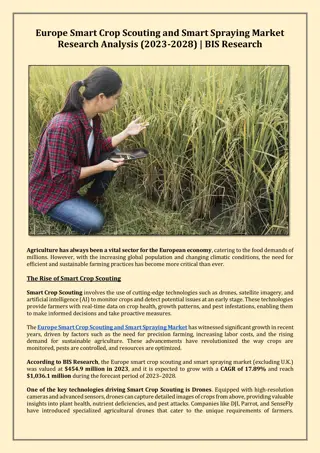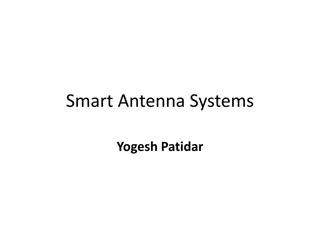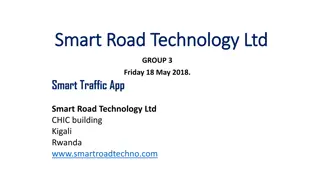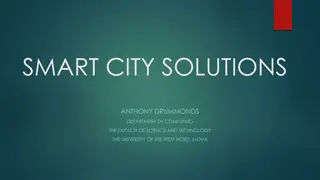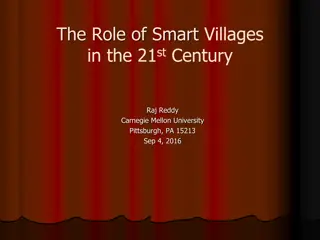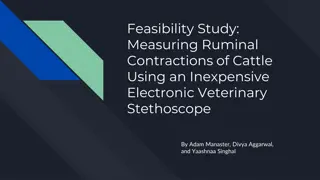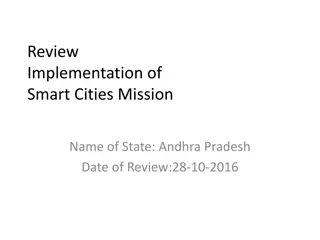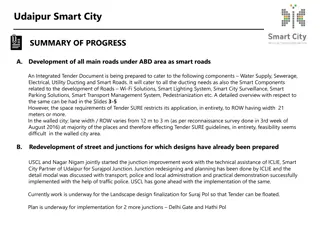SMART STETHOSCOPE
This innovative smart stethoscope utilizes machine learning and sensor technology to enhance the accuracy of heart sound detection, revolutionizing medical diagnostics. By collecting and analyzing heart sound data with high precision, it assists medical professionals in identifying abnormalities with a high degree of accuracy. The system incorporates a user-friendly interface and LED indicators for easy interpretation of results. Technical challenges include optimizing noise reduction, developing advanced algorithms, and validating performance against established standards. The solution approach integrates hardware components, software tools, and external servers for efficient analysis. Rigorous testing on diverse datasets ensures the reliability and effectiveness of the ML algorithms in classifying heart sounds.
Download Presentation

Please find below an Image/Link to download the presentation.
The content on the website is provided AS IS for your information and personal use only. It may not be sold, licensed, or shared on other websites without obtaining consent from the author.If you encounter any issues during the download, it is possible that the publisher has removed the file from their server.
You are allowed to download the files provided on this website for personal or commercial use, subject to the condition that they are used lawfully. All files are the property of their respective owners.
The content on the website is provided AS IS for your information and personal use only. It may not be sold, licensed, or shared on other websites without obtaining consent from the author.
E N D
Presentation Transcript
SMART STETHOSCOPE A4 -Ari Jain, Ryan Lee, Eri Sugita
Use Case Problem: Cardiologists using physical exams only caught 47% of abnormal heart sounds 2014 study in JACC Cardiovascular Imaging Primary Actor: Medical staff and assistants (e.g. cardiologist, paramedics, medical assistants, physician assistants)
Use Case Main Success Scenario: 1. User places stethoscope on patient s heart 2. Patient s heart sound waveform is continually collected and shown on the user s computer 3. The system segments 5 full lub dub sounds 4. The system filters the heart sound to match that of the dataset we trained on 5. ML analysis will classify the patient s heart sound as normal/abnormal 6. Indicator light on the computer will show up green for a normal heart and red for an abnormal heart Covered areas: Hardware, Signal Processing, Software, ML, Circuits
Requirements A stethoscope modified with a microphone sensor Sends data to a computer/phone using 3.5mm cable Analyze the heart sound on external server using ML to detect any abnormalities with at least 85% accuracy Add a LED to the stethoscope to indicate green for normal heart sound and red for abnormal heart sound UI on the computer/phone to show heartbeat wave and other data
Technical Challenges Ability to gather heart sound data from the patient with minimal noise electronically Create front end software to display the patient s heartbeat as well as analysis of it on a phone/computer Developing a ML algorithm that accurately determines whether a given heart sound is normal/abnormal. Aim to be better than a doctor (85% according to research) Demonstrate that the stethoscope correctly works
Solution Approach Stethoscope 3.5mm cable Sensor (Mic) Phone/Computer External Server for Analysis Light Indicator Earpiece
Testing, Verification and Metrics Step 1: Test ML algorithms first on a public dataset to verify that it classifies accurately Dataset > 800 useful datas with both normal and abnormal heart sounds with various levels of noise. Peter J. Bentley Heart Challenge dataset (http://www.peterjbentley.com/heartchallenge/) Dataset is split into 4: 1 training data, 1 validation data, 2 testing data
Testing, Verification and Metrics Step 2: Test segmentation algorithm of finding 5 consecutive lub dub beats Segment must begin on the first lub received and end on the 5th dub received Metric goal: 100% accuracy Step 3: Test ML algorithms/filtering on data received from the electronic stethoscope Test on the synthetic heart speaker to test on abnormal heart sounds Modify filtering if the classification is not accurate Metric goal: > 85% accuracy
Tasks and Division of Labor -Stethoscope (Ari) Design stethoscope hardware Order parts Build physical stethoscope Connect microphone, earpiece, and transmission cable Receive signal on phone/computer and transmit to external server for data processing Test indicator light Test signal quality Test robustness
Tasks and Division of Labor -Data Processing, Classification, and Segmentation (Ryan & Eri) Receive signal from stethoscope Segment 5 full lub dub beats collected from stethoscope Filter the heart sound to match that of the dataset we aim to train our algorithm on Develop an algorithm that trains the stethoscope to classify a heart sound First, classify as a normal/abnormal heart sound Next, classify abnormal sounds as Aortic Regurgitation (AR), Aortic Stenosis (AS), Mitral Regurgitation (MR), Mitral Stenosis (MS) Test stethoscope on the synthetic heart speaker and verify it reaches the desired accuracy
Tasks and Division of Labor -Software (All) Build external server to receive data Put processing algorithm on server Make a web/mobile app for viewing data in more detail as well as sending data to our processing algorithm Test web/mobile application Test everything all together on ourselves and ballistic gel dummy with speaker
Schedule https://docs.google.com/spreadsheets/d/1PRCphQJJN5vHCl8gASBjHpMXF _1_KJmHZ78V9qmw_bA/edit?usp=sharing
